‘But a book, a text, this is something that one can control.’1
As often, it began with a remark by Anthony Froshaug. I had told him that some book had a certain number of pages – it was an odd number. He observed that this must be a strange book. To imagine a sheet of paper with just one side, or to imagine a folded sheet or a gathered number of folded sheets, with five or seven or nineteen or twenty-one sides is to enter the world of M.C. Escher. And yet publishers and book reviews editors frequently describe a book as having an odd number of pages. They will look at the last printed page number and take that as the total number of pages. This reasoning applies equally with even numbers: if the last printed page number falls on page 238, one may say that a book has 238 pages, when in fact, if you count them all, it may be found to have 240 pages.
There are some arguments in favour of this practice. Readers are interested in how much content a book offers. Blank pages offer no visible content, and so one does not count them. (To put page numbers on otherwise blank pages is accepted as a blunder, or just a sign of blind haste.) This becomes especially evident in books from publishers – usually large-scale publishers – whose editors and production assistants have no time to manage and adjust the content so that the printed pages run nicely to the page before the very last one. When that is achieved the blank final left-hand page sits happily across from a blank end-paper or inside back cover. Many designers and production people will consider this blank final page to be a mark of grace and good taste. But a whole clutch of empty pages at the end of the book is a mark of clumsiness. To fill out the content so that it ends on the penultimate page may need some juggling of earlier pages, perhaps going back to the book’s first page. Or if the book is part of a series, one may fill these otherwise empty pages with notices for other books in the series. But if a book of 240 pages has its last printed page on page 229, it might seem misleading to say that the book extends to 240 pages – yet, materially speaking, it does.
It may be helpful here to introduce the idea of a ‘leaf’; this is now a more or less specialized bibliographic term. In a book, a leaf is the material carrier and it has two sides. A leaf gives two pages. A notebook may consist of 32 leaves and 64 pages.
All this may seem trivial and nit-picking stuff. I may have been worrying about it for a long time, yet wouldn’t think of burdening the world with these considerations. But at the end of last year I read in the London Review of Books a review that went out of its way to mention, in the course of the piece, the number of pages of the work under consideration: a story or novella by Helen DeWitt, with the wonderful title The English understand wool. David Trotter, in describing the extreme brevity of the story writes that it has ‘69 pages, many of them largely blank’. Though I hadn’t read any of DeWitt’s work, I remembered that some years ago I had had a brief email exchange with her. I regret that the emails are now lost from my hard discs, but I think the topic was pictograms. As this latest work shows, she is unusually interested in the material production of texts. This review felt like a reasonable prompt to raise the general issue of how exactly we measure the extent of a book, and I wrote a letter to the LRB.
David Trotter’s review of The English understand wool brings out very well a strong feature of DeWitt’s writing here: the laconic. Everything here is pared down and flinty, like the compositions of Thelonious Monk that play a role in this fiction. Though laconic is not a feature, overtly at least, of the work for which she is best known: The last samurai, which Trotter describes as running to 482 pages (another suspicious number for the real extent of a book: it doesn’t divide simply by 4).
One of the threads that runs through The English understand wool concerns digital technology. We learn that the father of the central figure and the narrator of the story (Marguerite), was a software engineer who started out in the 1980s, just as the personal-computer revolution was getting underway. However: ‘He did not come from a comfortable background, so he did not have the advantages of, say, Bill Gates.’ (p. 17) But in her early years Marguerite’s parents had become fabulously rich and she enjoyed a private education with no limits on expense. At the time of the story’s action she is 17 years old and spending some weeks with her mother in London, in Claridge’s hotel. One day her mother disappears, taking most of the money with her. To bring in something to replace the hundred million dollars she has lost, Marguerite resorts to a deal for a book that will tell her extraordinary story. Her literary agent accepts a publisher’s offer of $2.2 million for North American rights.
The contract arrives from her agent as a Word document attached to an email. Marguerite writes: ‘I was surprised that the contract had not been sent in a watermarked PDF, for example, but no doubt all concerned were anxious to close the deal while the author was isolated, distraught.’ (p. 53) She revises the text of the Word document so that it balances more in her favour. The publisher’s draft text had stipulated that if the text is not acceptable to them, then they will not publish. And further: not only will the final payment to the author not be made, but the advance payment ($1.1 million) should be repaid, and the agent’s fee kept by the agent. Marguerite’s revised text states that the manuscript will be acceptable if it covers the facts known to the author, that no changes will be made to the text without the author’s approval, that in the event of no publication the advance payment will be kept by the author. She prints out five copies, signs them, and sends them off with FedEx. The document is then signed by all parties.
By now the story is near its end. I won’t relate the events of the last pages. But a small moral point has been made: Word files are very easily alterable, PDF files are much more stable (though not absolutely so), and text printed out on paper is yet more stable.
The bibliographic description of the book in the LRB gives an extent of 69 pages. But page 69 is just the last numbered page; the book is made of 72 pages. Pages 70 and 72 are blank, and page 71 carries an author’s note. This note is set in a slightly smaller size of type, appropriately for the content, and this also helps to keep it within one page. DeWitt here addresses the theme of book production and how much control an author can have and what this might cost. She refers to Edward Tufte and his series of self-published books on information design, in which he gained complete control of production. Tufte’s books, which, as the series went on, became increasingly lavish and no-expense-spared, are good examples of the drive for perfection and bon ton (good taste) that are the leading principles of the mother of Marguerite and now Marguerite herself.
In her afterword DeWitt suggests that the power of the Tufte’s principles ‘has yet to be put at the service of fiction’. But: ‘A writer without Tufte’s resources must do a great deal independently (it’s not uncommon for hours of coding, of refining results in design software, to produce a single image within a text).’ Thanking her readers for their support in helping her to replace a laptop and to fund a subscription for Adobe software, she ends with an appeal for further help in this department of technical production.
Unaddressed in this note is the role of the publisher. Edward Tufte found a way to publish his work, in the first instance by selling directly to readers, without the mediation of an existing publisher or a distributor. DeWitt now has an established and enlightened independent publisher, New Directions. Some aspects of the design of this new series – ‘Storybook ND’ – will offend Tuftean visual taste: typefaces, binding method. But New Directions has done her good service in the disposition of the book’s pages. The unnumbered last three pages of this text are a fine example of bon ton in book production.
————————————————————
Scans from the book:
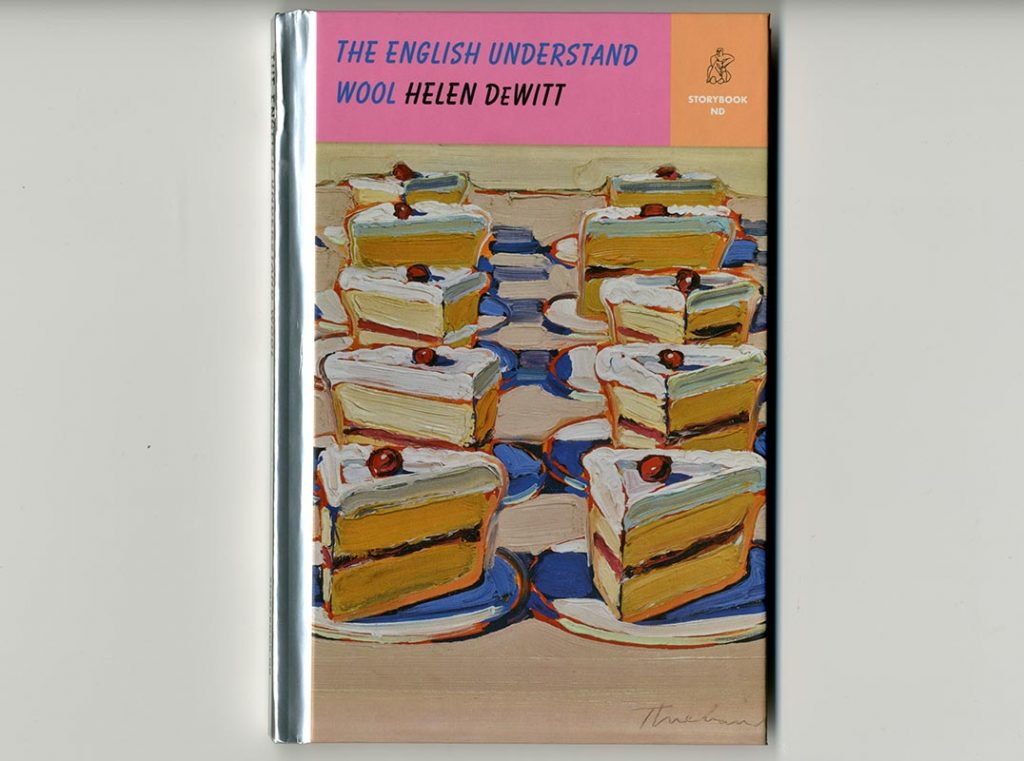
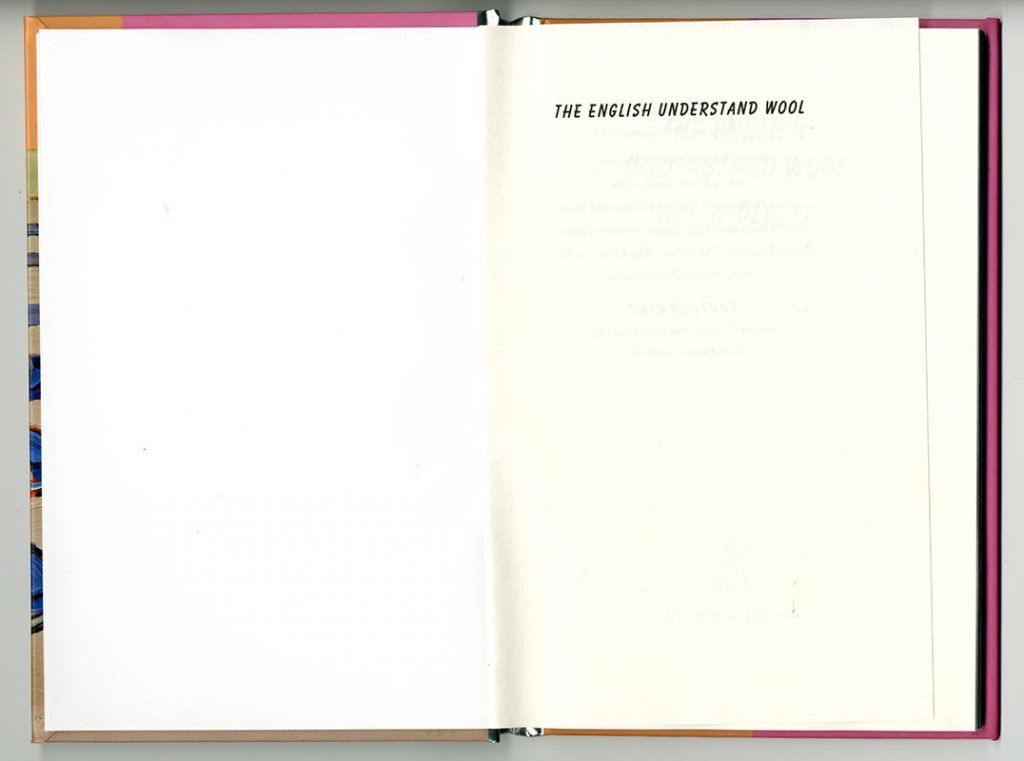
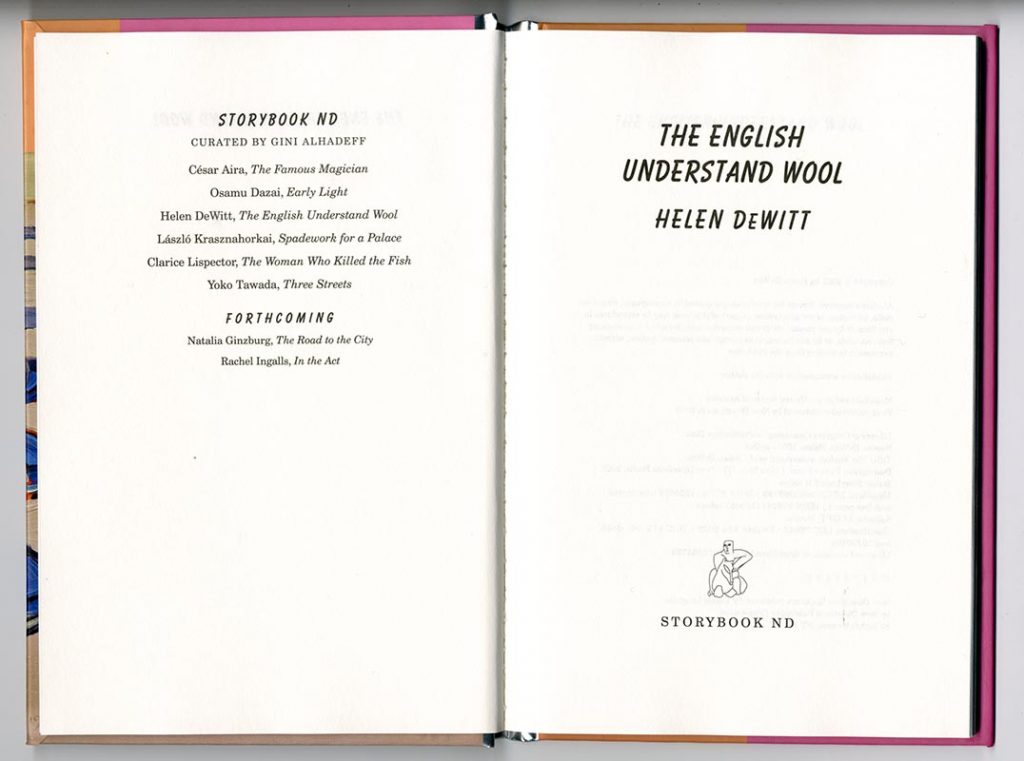
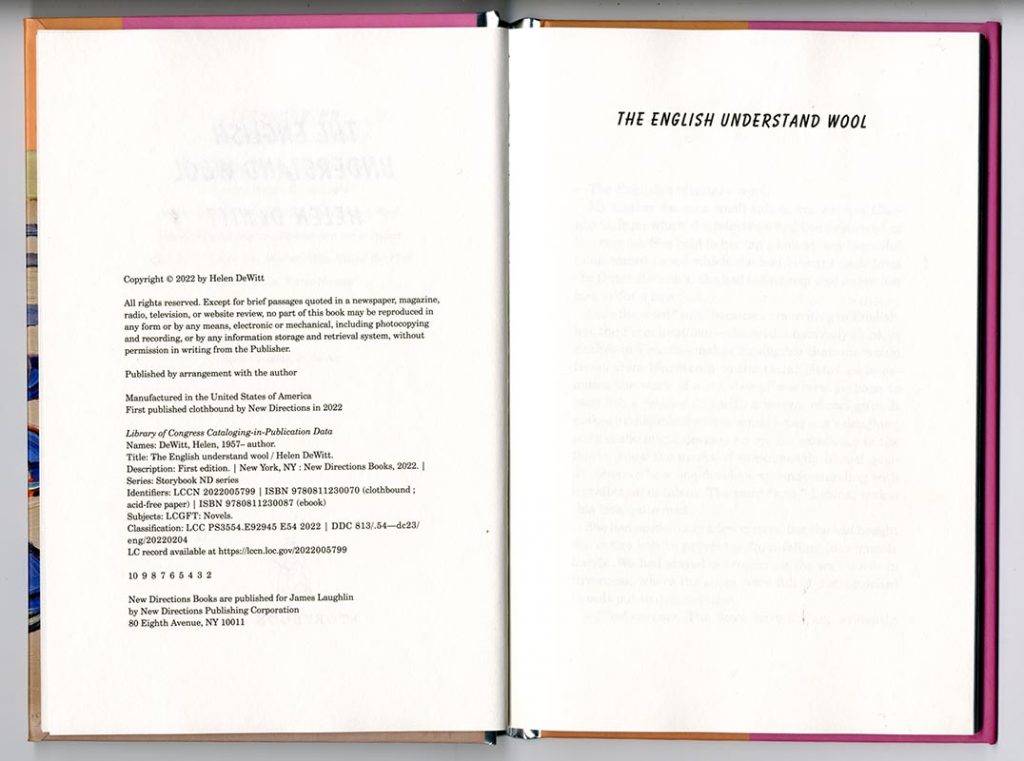
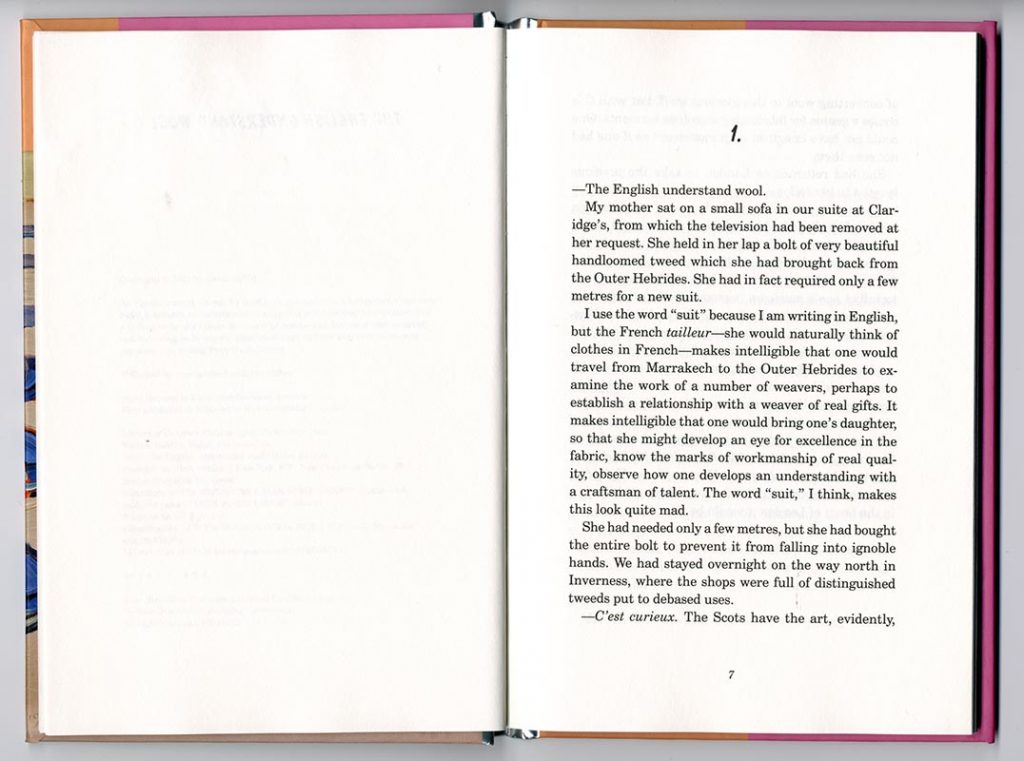
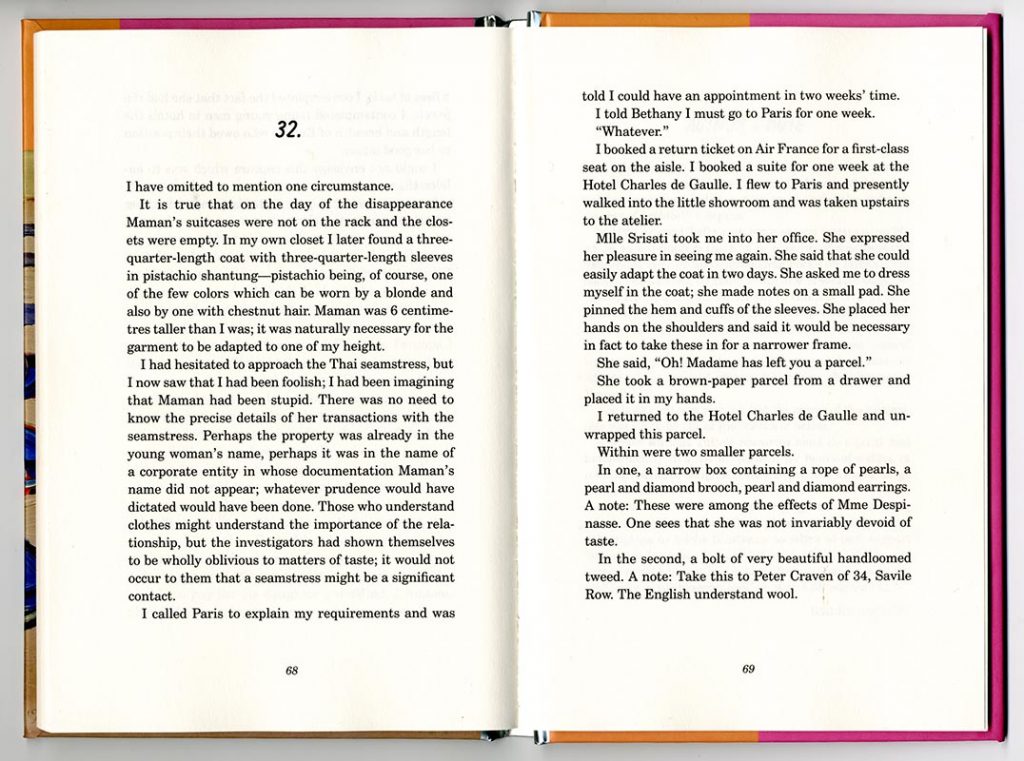
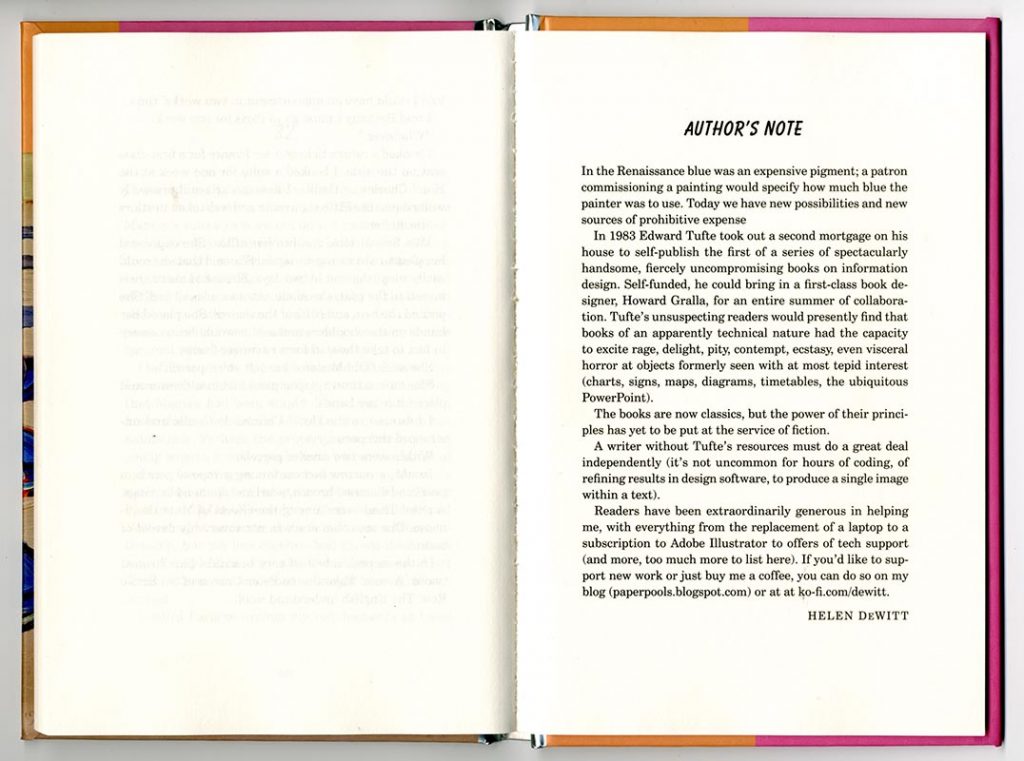
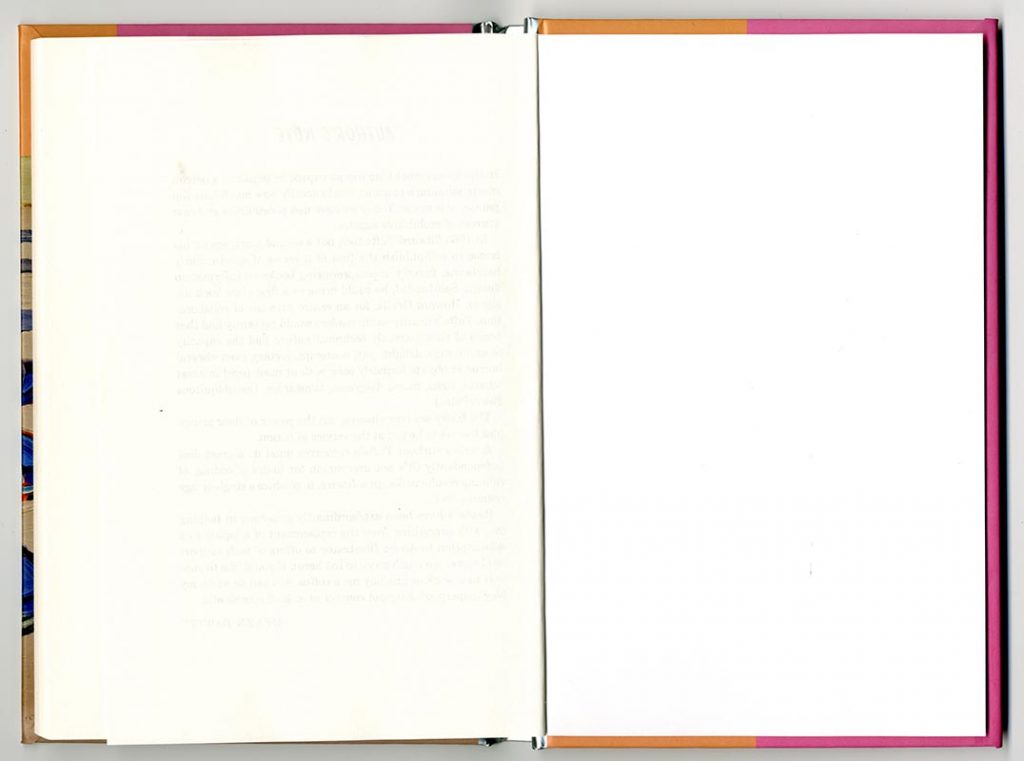
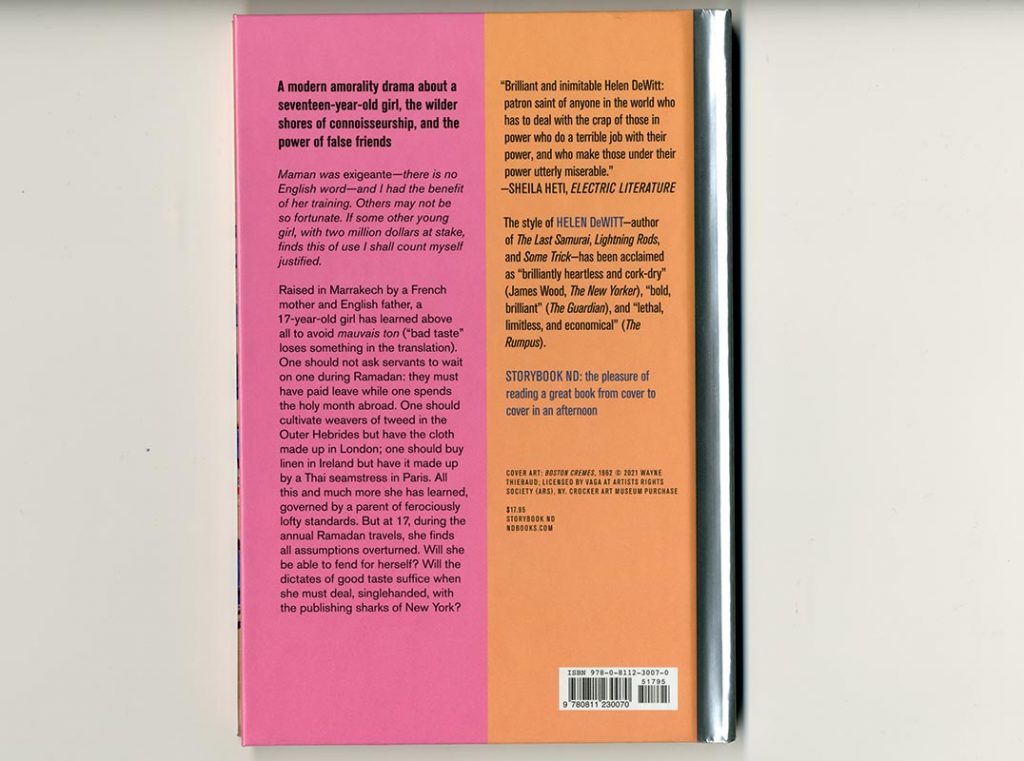
front cover
inside front cover + p. 1
pp. 2–3
pp. 4–5
pp. 6–7
pp. 68–69
pp. 70–71
p. 72 + inside back cover
back cover
————————————————————
Robin Kinross
————————————————————
Note